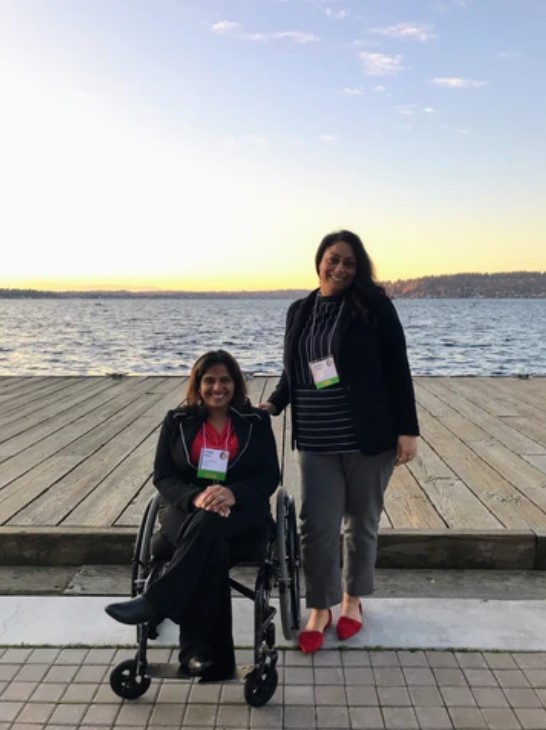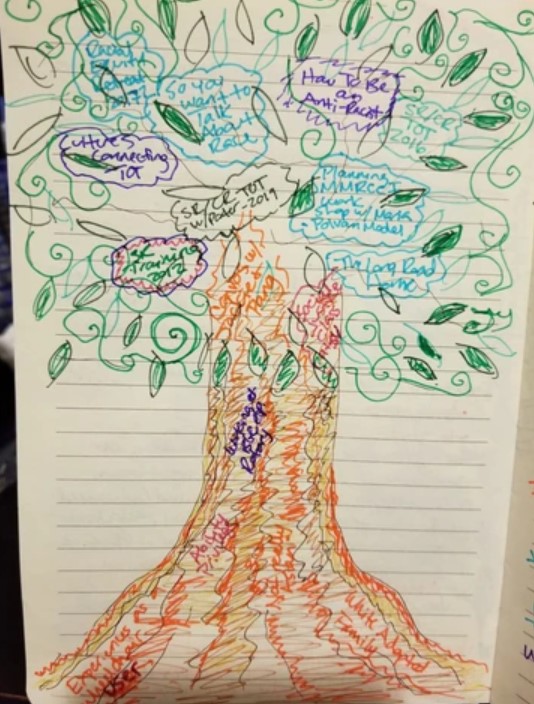“This is the shadow of hope. Knowing that we may never see the realization of our dreams, and yet still showing up.” – Austin Channing Brown


We often talk about change as moving from one state to another. You are one way. You do something or something happens, and then you’re in a new state. In our quality improvement work, I have referenced different frameworks for change including the “Stages of Change,” which has concrete steps to signify the change process or the matrix for “Managing Complex Change,” which includes flow chart boxes with specific elements of the change process.
When looking at the stages, there are gaps between one step to the next step. On the flow chart, there are gaps between the text bubbles and arrows. I hadn’t thought about or talked about what those gaps actually mean until recently. They are the transition times and they include the feelings, tension, ambiguity, loss, pain, and uncertainty that occur when you’re in the process of moving from one phase to the next. As I reflect on what it means to support change as a POC leader, I think about it as being in and constantly navigating the gaps, the spaces between—the in-between space.
Existing in the both/and
In our structural racism workshop, we talk about embracing the concepts of “yes, and” or “both/and” instead of either/or thinking. I think about that concept and see myself as that slash between “both/and.” As an organization, SOWA is also in the “both/and” place. Pushing for racial equity and equitable practices internally and externally is a long and arduous process—the space between where we are and where we want to be (while seemingly a small gap on a flow chart is vast in reality). There are pieces we are doing well and there is much more work that has yet to be done.
As we push for change, being a POC leader often means being able to adhere to white culture norms and also being able to authentically engage with our staff and partners, many of whom hold a very high expectation of what it means to lead for equity and justice. On an interpersonal level, I’ve seen the impact on my relationships as well. How do I acknowledge that once I move into a leadership role, the relationships I had with peers now have power dynamics standing between us? There’s a lot of tension in the in-between, in being both a friend and a leader, and I’ve found myself re-evaluating my preconceptions of what it means to be a leader within the context of relationships.
Navigating tensions
Leading change also means navigating tensions and constantly searching for that perfect point of balance. I think about what it means to be a leader now, knowing that I am where I am because of the leaders and mentors who came before me. It means holding doubt. Am I ready to be in this leadership position? (Acknowledging that this doubt can also represent my internalized racial oppression.) How will I honor the legacies of the past and those who came before me, and how do I also hold space for who I am and my values and vision?


How much do we conform to the ways that are expected of us as leaders, particularly when we lead within structures and systems that are rooted in white dominant culture? How much do I push for a mistakes-allowed environment and model making mistakes, while knowing the risk of showing my imperfection in leadership spaces that frequently demand perfection? How much do I push for equity (internally and externally) when I simultaneously risk getting pushed out (if not literally, then in effect through the subtleties of white culture—microaggressions, lack of feedback, “last minute” meetings, etc. that make it challenging)? I know that to be “successful” or to be able to stay in leadership spaces within the broader dominant culture. I have to hold the tension between conforming to or challenging those norms. To “let it slide” or ask questions. To “go with the flow” or push against the existing structures. That’s what it means for me to be a POC leader for change—holding these tensions and balancing the risks.
Planting seeds in the shadow of hope
Inspired by the theme for Bridge this year, as an organization, we can continue to plant seeds and tend to the work knowing our current teams may not achieve our full vision of an equitable ecosystem for all youth development and expanded learning opportunity programs. We know we’ll make progress, and we’ll continue to face uncertainty. We know change is never-ending, and where any one of us leaves off, we’ll have a new generation to take the lead.
When I think about what it means to be a POC leader working for change, I think of Austin Channing Brown’s reference to being in the “shadow of hope,” I may never experience the benefits or see the impact of the work I do. I won’t know the influence or change that will come from my actions, but I will continue to do the necessary, hard work. I will stay in the in-between spaces and balance tensions, make mistakes, and continue to reflect as I go. I invite you to join me…join us, in the shadow of hope.
